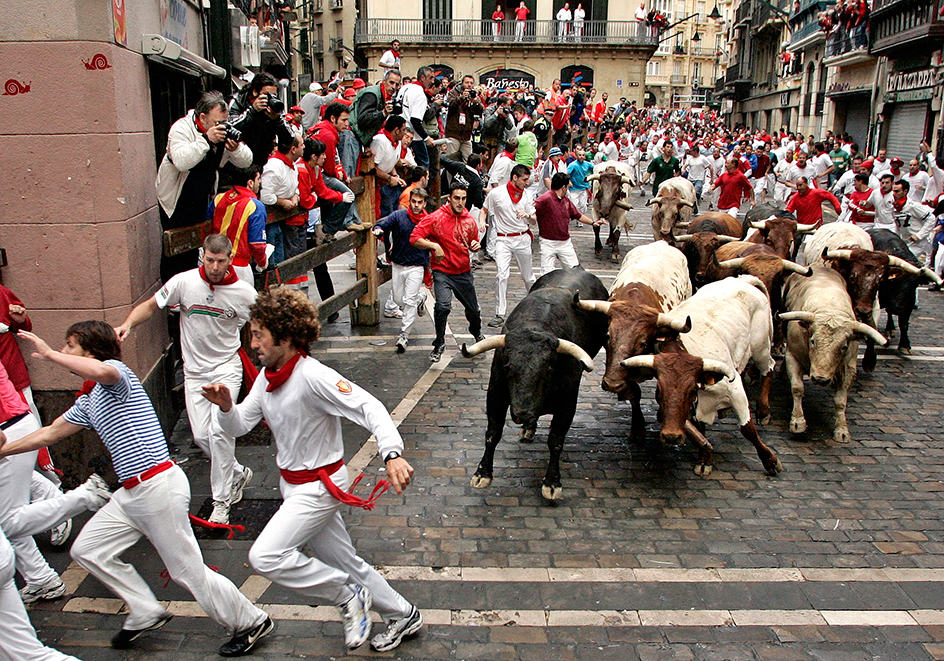Running of the bulls is an event during the annual Festival of San Fermín in Pamplona (Iruña), Spain. It is also called the encierro. The spectacle begins when herders release a group of bulls from a pen and make them run along narrow streets that lead to a bullring. People participate by entering the streets and running at the same time as the bulls. The run ends when the animals reach the bullring, where bullfights are held later in the day. The Festival of San Fermín’s encierro takes place every morning between July 7 and July 14. Similar bull-runnings occur in other parts of Spain.

The length of the Pamplona run is about 1/2 mile (0.8 kilometer). The event usually lasts about two to four minutes. The narrow streets are lined with barricades so that the bulls do not escape. Thousands of people enter the run at various points and try to sprint ahead of the animals. The goal for each participant is to stay in front of them for a few seconds and then to move out of the way quickly. Spectators watch the race from behind the barricades and from windows and balconies overlooking the streets.
The running of the bulls is highly dangerous. The people risk being trampled or gored, and the bulls may fall down or become injured. Some animal rights organizations oppose this tradition.
Spanish celebrations involving bull-running or bullfighting date back to at least the 1000’s. Pamplona’s Festival of San Fermín has included such activities since 1591. The festival honors Saint Fermín, spelled Firmin in English, a Roman Catholic bishop and martyr (one who suffers or dies for religious beliefs). Saint Fermín probably was born in Pamplona in the A.D. 200’s. In addition to bull-running and bullfighting, the festival’s activities include dancing, fireworks, and music concerts. The running of the bulls gained worldwide fame following the publication of Ernest Hemingway’s novel The Sun Also Rises (1926). Hemingway drew worldwide attention to the Spanish idea that the encierro is a test of courage and strength.
See also Bullfighting .
